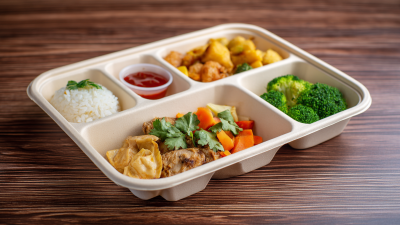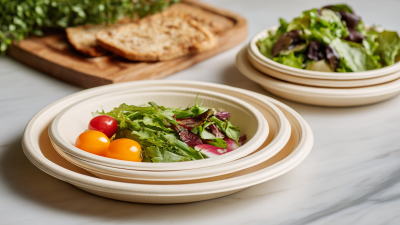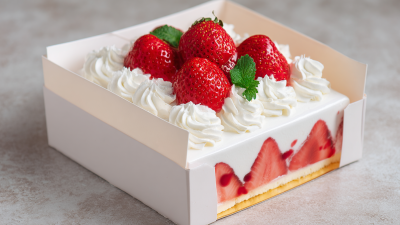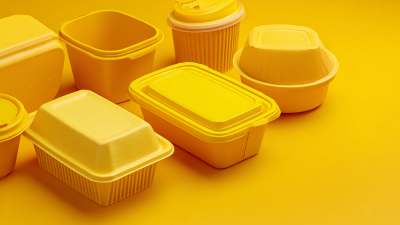As the global demand for sustainable packaging solutions continues to rise, Bagasse Food Containers are taking center stage at the 138th Canton Fair 2025. This innovative product, derived from sugarcane pulp, offers an eco-friendly alternative to traditional plastic containers, aligning perfectly with the fair's commitment to sustainability and environmental conservation. Attendees will witness firsthand how Bagasse Food Containers not only reduce plastic waste but also provide a biodegradable and compostable solution for the food industry. This year's fair highlights the transformative impact of such advancements on food service and takeaway operations, showcasing the versatility and durability of these containers. With a growing emphasis on environmentally responsible practices, the spotlight on Bagasse Food Containers at the Canton Fair signifies a pivotal shift towards greener choices in packaging, embodying the future of eco-conscious consumerism.
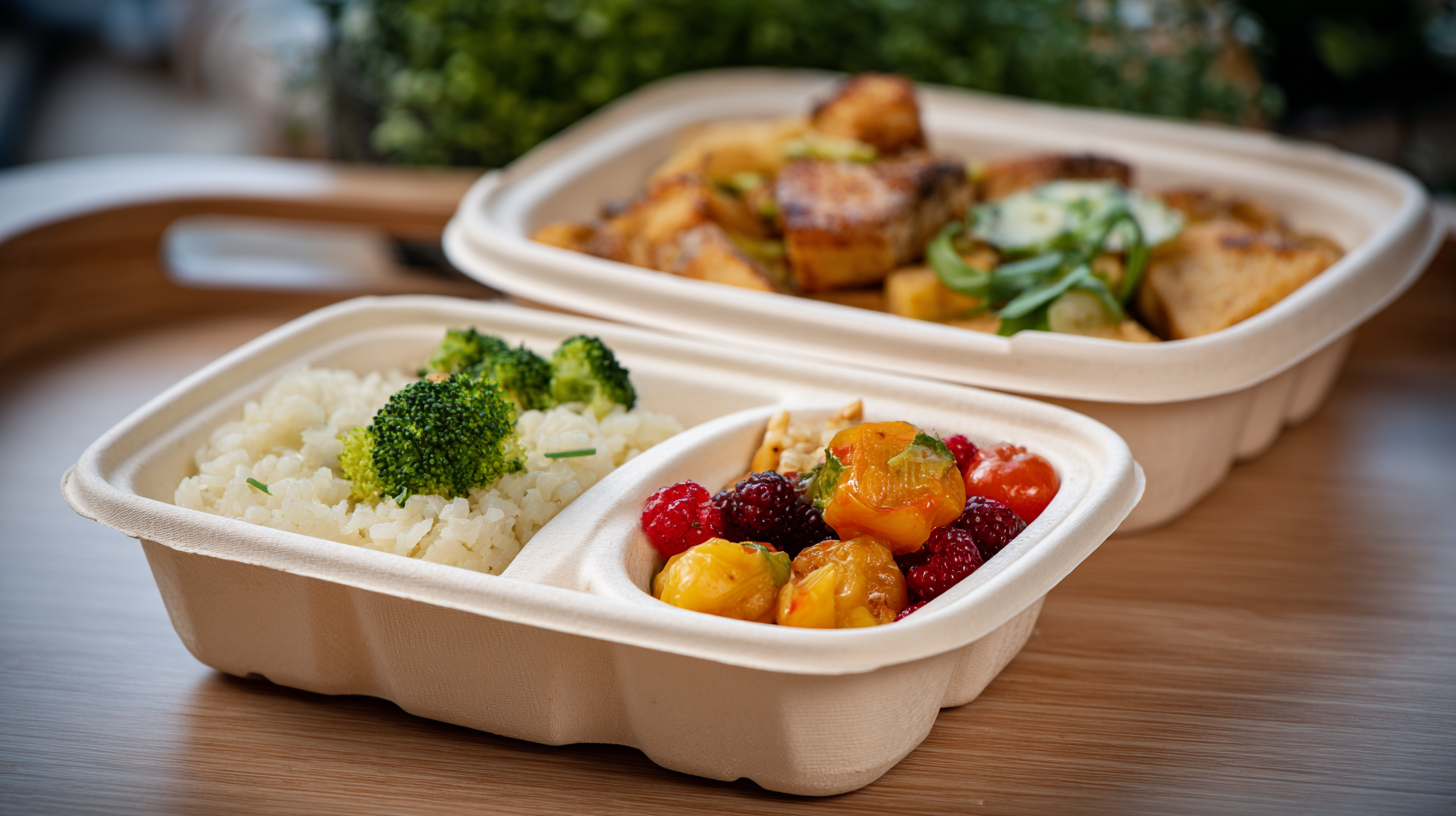
At the 138th Canton Fair in 2025, the spotlight will be on innovative design trends in bagasse food containers, a material derived from sugarcane that exemplifies sustainability in packaging. According to a report by the Sustainable Packaging Coalition, the demand for eco-friendly food containers is anticipated to grow by approximately 6% annually over the next five years. This surge is driven by an increasing consumer awareness of environmental issues and a shift towards biodegradable alternatives. Bagasse, known for its sturdy properties and high resistance to moisture, enables manufacturers to create functional and aesthetically pleasing food containers that cater to modern dining experiences.
Moreover, research indicates that the global biodegradable food packaging market is expected to reach USD 20 billion by 2027, highlighting the significant opportunity for innovation within the sector. At the Canton Fair, various exhibitors will showcase the latest trends in design, focusing on user-friendly features such as stackability and microwavability, which enhance convenience for consumers. The convergence of innovative designs with sustainable materials like bagasse not only supports environmental goals but also offers businesses a competitive edge in a rapidly evolving market. This event will be crucial for industry stakeholders looking to embrace and implement these trends into their product lines.
| Container Type | Material Composition | Eco-Friendliness Rating | Design Features | Market Demand (%) |
|---|---|---|---|---|
| Takeaway Box | 100% Bagasse Fiber | 5/5 | Leak-resistant, Microwave Safe | 75% |
| Food Tray | Bagasse + PLA Coating | 4/5 | Stylish Design, Durable | 65% |
| Cup | Bagasse Mixed with Recycled Paper | 4.5/5 | Insulated, Available in Various Sizes | 80% |
| Food Bowl | 100% Organic Bagasse | 5/5 | Stackable, Biodegradable | 70% |
As the global focus on sustainability intensifies, the 138th Canton Fair 2025 showcases innovative bagasse food containers, highlighting their significant environmental advantages over traditional materials.
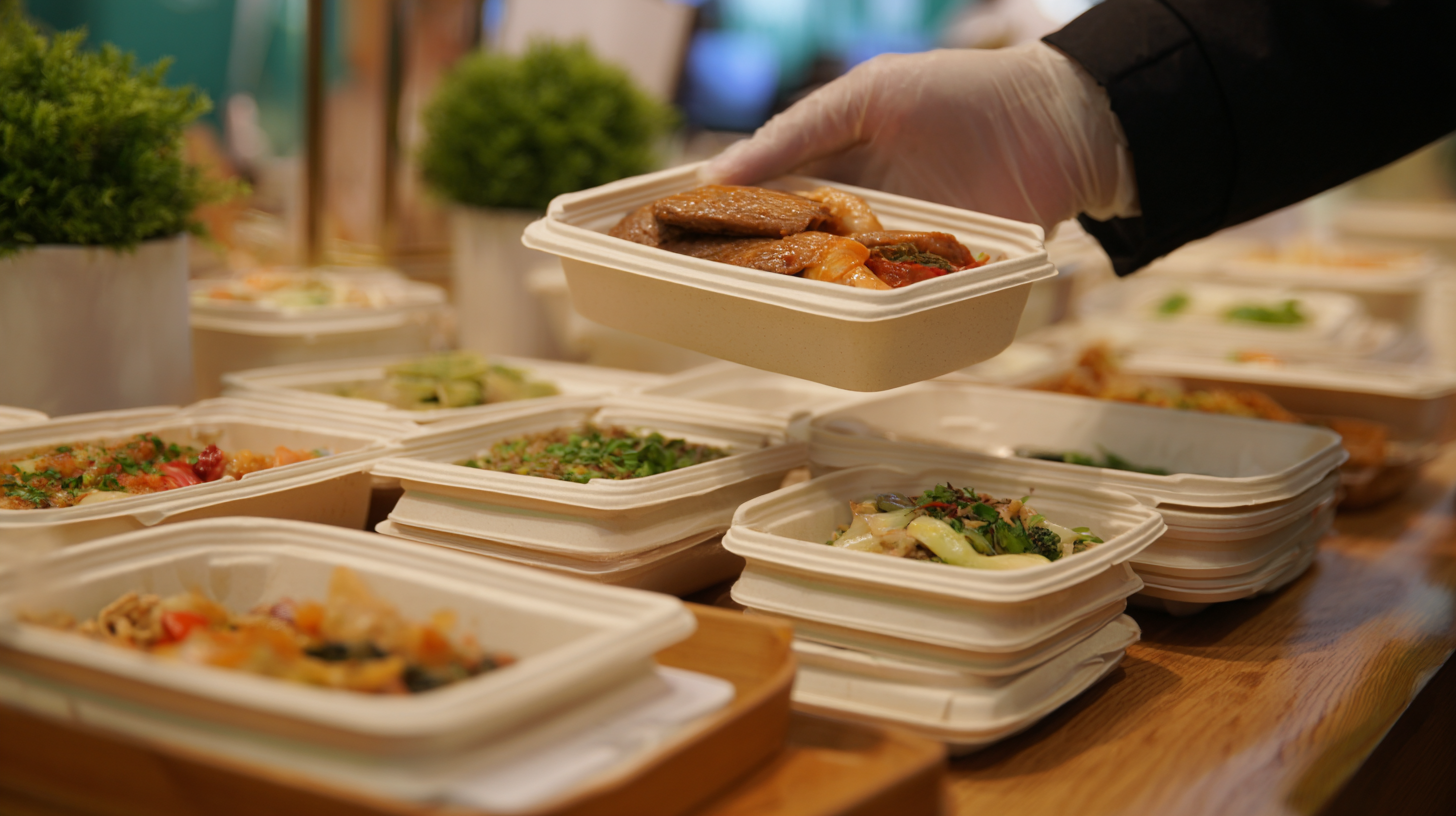 Bagasse, the fibrous byproduct of sugarcane processing, is not only biodegradable but also boasts a lower carbon footprint. According to a report from the Food Packaging Forum, bagasse packaging emits approximately 50% less greenhouse gas compared to conventional polystyrene. This transformation in packaging materials reflects an industry shift towards sustainable practices that address pressing environmental issues.
Bagasse, the fibrous byproduct of sugarcane processing, is not only biodegradable but also boasts a lower carbon footprint. According to a report from the Food Packaging Forum, bagasse packaging emits approximately 50% less greenhouse gas compared to conventional polystyrene. This transformation in packaging materials reflects an industry shift towards sustainable practices that address pressing environmental issues.
Moreover, the water usage for producing bagasse is substantially lower than that for paper-based products. The World Wildlife Fund (WWF) estimates that it takes about 1,800 liters of water to produce a single kilogram of paper, whereas bagasse production requires about 2,000 liters for every 1,000 kilograms, presenting a more efficient alternative. With these impressive sustainability metrics, businesses are increasingly recognizing the long-term benefits of incorporating bagasse into their packaging solutions, not merely for compliance but as a pathway to cultivate consumer loyalty among environmentally conscious shoppers.
The demand for eco-friendly food packaging solutions is on the rise, with market growth projections indicating a significant shift towards sustainable practices in the coming five years. Biodegradable packaging options, particularly those made from bagasse, are becoming increasingly popular as consumers and businesses look for environmentally responsible alternatives to traditional materials.
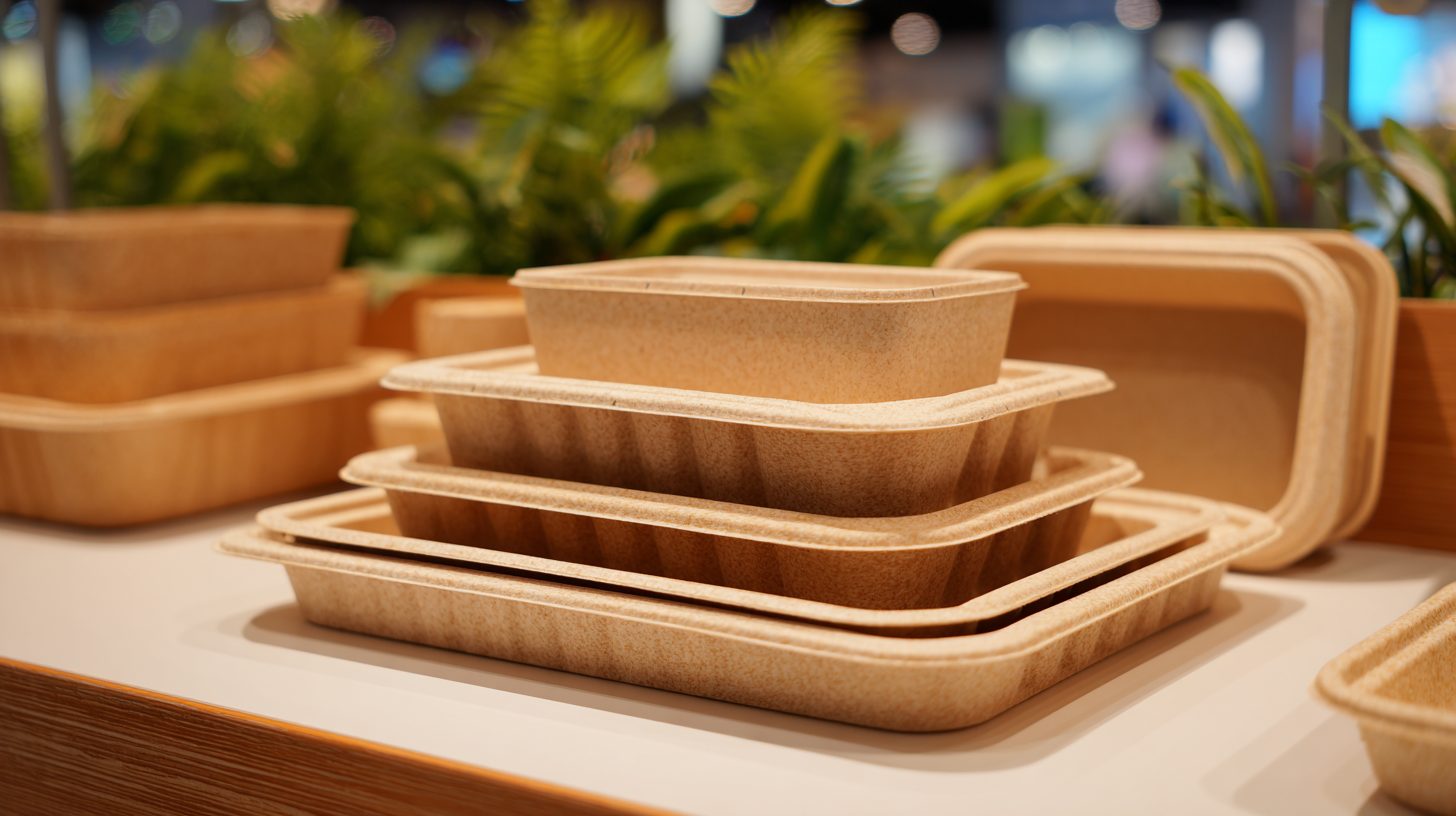 The 138th Canton Fair in 2025 will showcase innovative bagasse food containers, highlighting their potential to address both ecological concerns and market needs.
The 138th Canton Fair in 2025 will showcase innovative bagasse food containers, highlighting their potential to address both ecological concerns and market needs.
Furthermore, the biodegradable plastic additives market is projected to reach USD 2.20 billion by 2029, underscoring the industry's shift towards sustainable practices. This growth is driven by the rising awareness of plastic pollution and the need for materials that can break down more quickly and safely in the environment. As more companies invest in innovative packaging solutions, we can expect a substantial transformation in the food packaging sector, ultimately benefiting both consumers and the planet.
The demand for biodegradable food containers is accelerating, driven by evolving consumer preferences and a heightened awareness of environmental sustainability. According to recent market analyses, the global biodegradable food packaging market is projected to grow from USD 238.8 billion in 2025 to USD 391.3 billion by 2035, reflecting a compound annual growth rate (CAGR) of 5.6%. This shift indicates that more consumers are seeking eco-friendly alternatives over traditional plastic packaging, influenced by a growing understanding of the ecological impacts of their choices.
Additionally, the rising popularity of convenience foods is further contributing to this trend. The USA rigid food packaging market alone is expected to grow at a CAGR of 5.9%, as consumers increasingly prefer on-the-go meals that align with their environmentally conscious lifestyles. This change in consumer behavior underscores the critical role of innovative materials such as bagasse in shaping the future of food packaging. As regulations tighten around single-use plastics, the focus on developing biodegradable options continues to gain traction, demonstrating a clear pivot towards sustainability in the food packaging industry.
The following chart illustrates the growing preference for biodegradable food containers among consumers, reflecting a shift towards sustainable choices. The data represents survey results indicating the percentage of consumers favoring different types of food containers over the past three years.
At the 138th Canton Fair 2025, the spotlight is set on innovative bagasse food containers, showcasing their successful integration within the food service industry through various case studies. Renowned restaurants and catering services have adopted these eco-friendly containers to meet consumer demand for sustainable options. For instance, a high-end restaurant in Shanghai transitioned to bagasse containers for takeout, significantly reducing their environmental footprint while maintaining food quality and presentation. This shift not only appealed to eco-conscious diners but also enhanced the restaurant's brand image as a leader in sustainable practices.
Another compelling case comes from a popular food truck operating in Beijing, which embraced bagasse packaging for their gourmet meals. The truck's owners reported a notable increase in customer satisfaction and loyalty, as patrons appreciated the biodegradable materials. Furthermore, the food truck experienced a boost in social media engagement, with customers sharing their positive experiences and emphasizing the importance of sustainability in their dining choices. These cases underscore the growing trend of integrating bagasse containers into food service operations, paving the way for a greener future in the culinary world.
